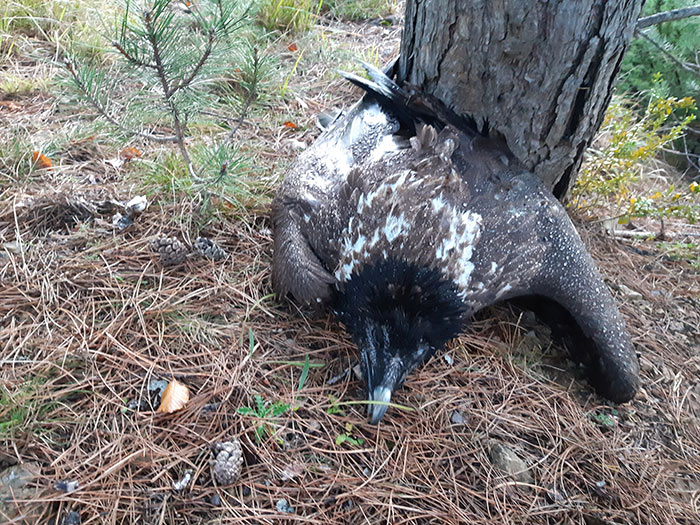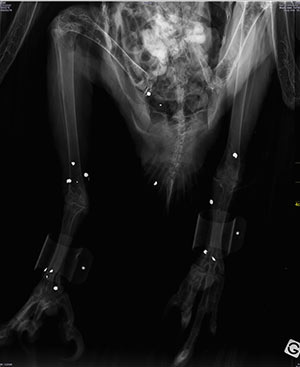Reintroduced Bearded Vulture shot dead in the France

Released this year as part of a conservation program, this majestic vulture was found riddled with lead on October 11. The LPO files a complaint for destruction of protected species.
Dolomite was a young bearded vulture, a rare and endangered species of vulture. Born on March 12, 2020 at Tierpark Zoo (Berlin), he was released in Aveyron on June 13 by the LPO. On October 11, 2020, following the alert launched by the bird's GPS, Dolomie was discovered dead at the end of a forest track on the territory of a municipality of Lozère, in the Cévennes National Park.

The corpse was quickly taken care of with a view to carrying out the autopsy and analysis protocols. Dolomite shows about fifteen shot pellets (15) on the x-ray. These pellets did not affect internal organs, but caused sub-sternal hemorrhage, hemo pericardium and perforation of the intestine, a small piece of bone having pierced him during the shock. The bird therefore died from internal bleeding.
The LPO has filed a complaint for the killing of a protected species, an offense punishable by 3 years' imprisonment and a fine of € 150,000.
Unfortunately, this is not the first time that a vulture has been the target of shooting. In Europe, another young vulture released in the Grands Causses in May 2019, was found dead on October 4 of the same year. The OFB confirmed that it was a deliberate killing, and the investigation is still ongoing ... Layrou , released in 2013, was the victim of a deliberate shooting in the Lot in June 2014. Benigno , a 14-year-old individual marked in Spain in 2000 was shot dead on November 26, 2013 in the Pyrénées-Atlantiques. And this list is unfortunately not exhaustive.
Since 2016, 33 bearded vultures have been reintroduced as part of the vulture conservation program supported by the European Commission and coordinated by the LPO: the LIFE GYPCONNECT . The return of the vultures contributes to the reestablishment of an essential link in natural and pastoral spaces. By feeding on animal corpses, these scavengers increase the resilience capacity of ecosystems by limiting the risks of emergence and dispersal of pathogenic strains and by participating in soil restoration (litter, soil biomass).
13 October 2020
Share this story




